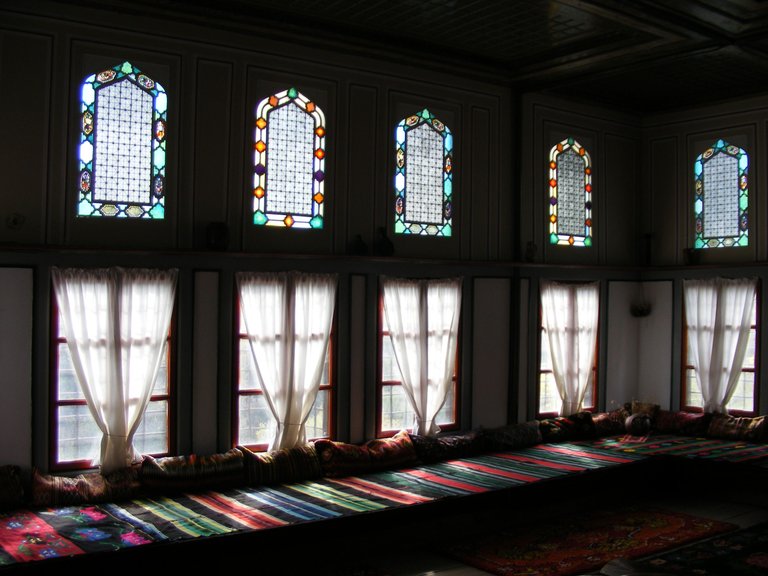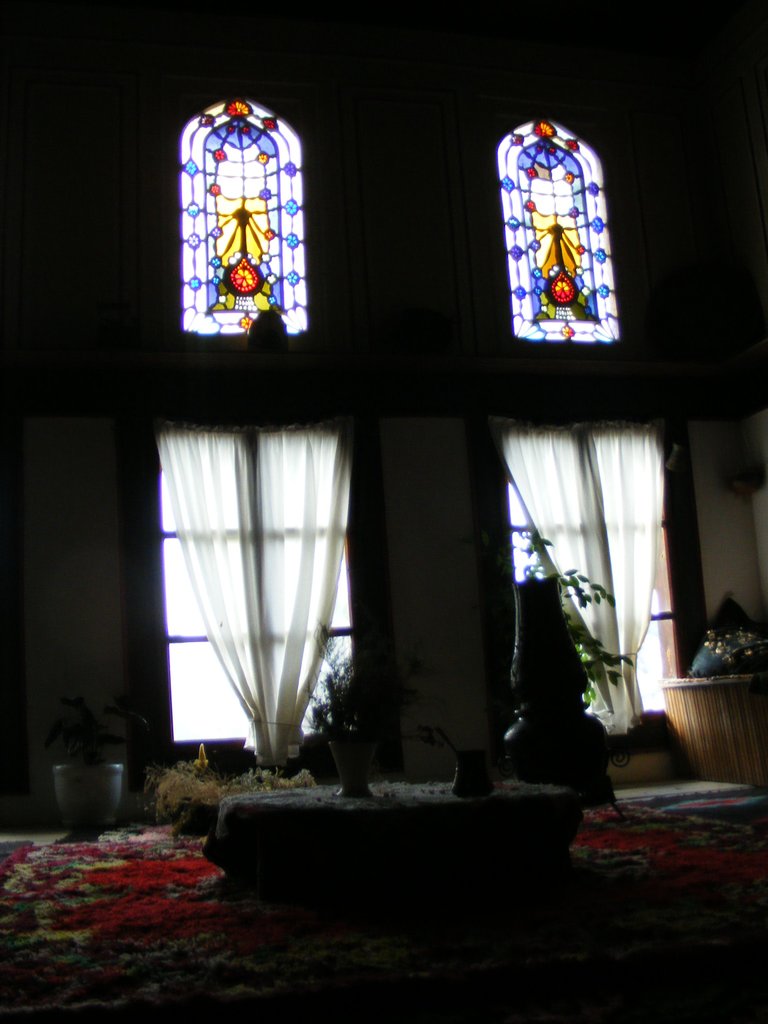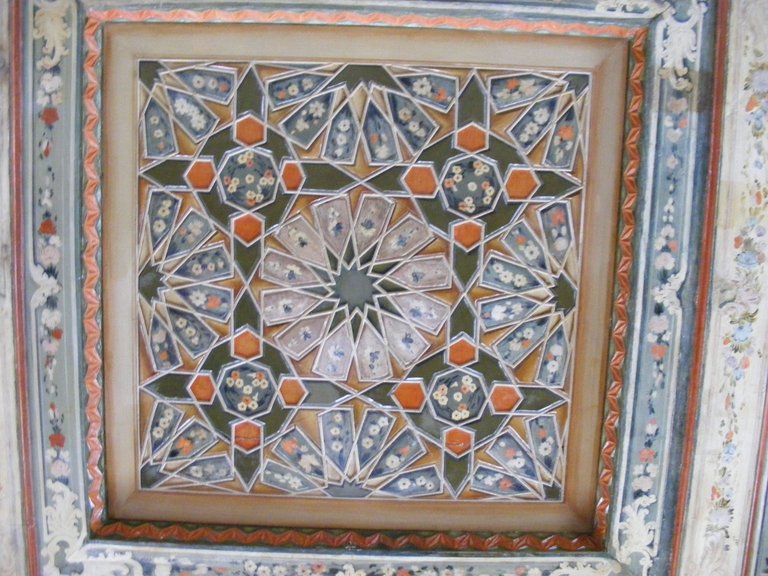For those of you who have never had the pleasure, Melnik is a charming little town in the southwestern corner of Bulgaria. In fact, it is the smallest settlement in Bulgaria that is recognized as a city, even though its population hovers around a mere 400. It is still considered a city due to its long and glorious history -- NOT for battles or for religious heritage (though it once boasted 90 churches and monasteries, believe it or not!!!), but as a peaceful center of trade (see https://en.wikipedia.org/wiki/Melnik,_Bulgaria for details). I will be posting further Melnik pics soon, for those of you who are hungry for more.

The Kordopulov House, consisting of 4 full storeys and a summer garden on the top floor, was built a score or so years before the Declaration of Independence was even a twinkle in the American Founding Fathers' eyes -- in far-back 1758 -- by a rich Greek merchant, Kordopulos. Here, you can see it sort of hidden behind the механа or restaurant (it's difficult to photograph such a big subject ;)).

It was constructed for the exclusive production of (and sales negotiations for) various sorts of wine, including the Broad-Leafed Vine Variety, which Melnik has been famous for since Roman times. It is the largest standing house of its type from the period remaining in the Balkans. It even has a huge wine cellar with winding corridors -- carved out of the soft sandstone beneath by human hand.

Greeting the visitor in the front yard lie the ruins of a late medieval church, St. Veronica (I believe):

A close-up of the altar. Interestingly enough, nearly all ruined churches have such altars, and even non-religious (but historical) places are full of coins Bulgarians and other "pilgrims" have placed there for good luck/blessings/whatever. On to the inside of the home itself, which is what really makes it stand out in my mind ...

The "smaller" room only varies from others in the area in size and in style -- the windows and ceiling combine Ottoman, Venetian, and Bulgarian [correction: Slavic] motifs of the time.

And another shot.


This is the ceiling.
Cupboards (they had сандъци -- trunks -- to protect their clothes).

The paintings somehow remind me of Orhan Pamuk's book, My Name Is Red -- for any readers out there.

In it, Pamuk wrote about the terrible encroachment of Venetian techniques into traditional Islamic painting.

The bedroom also shows signs of both Eastern and Western influences -- a minaret-fashioned fireplace, topped with a cross.

Does anyone else see a face here?

Early ceiling mirrors, maybe? ;)

Whimsical walls.

Everyday implements.

And as a bonus: My interpretation of what is left of the Winter Tower (torn down when no longer of logistical importance).

Of course, there's much more, but I just wanted to give you a taste of what there is to see at the Кордопуловата Къща. Don't forget to ask for your free sample of wine at the exit, and try to imagine how long it would take to drink the wine in the barrel downstairs :D
Ciao за now!
Thanks that realy good article!
Glad you like it, Mihail!
I hope many people see it and valued highly good luck!
Checking out your profile now.
Thank you. I am new to the platform I will like feedback.
Как? Не разбрах "gone" :(
:) ха ха можем и на български да се разберем. Малко съм уморен и правя грешки.
Nice pictures!!!
Thank you, Georgi!
This is nice work! i will follow you. I could imagine you could like my pictures too...
Keep up posting!
Thanks, I'm glad you like it! I am checking out your posts now :)